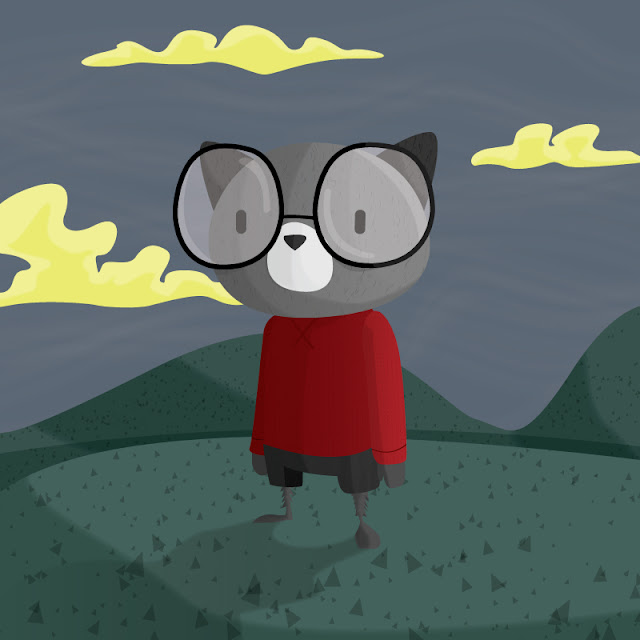One of the first things Chris covered on the software side of the class was Illustrators' "Draw Inside" mode. This is hands-down the single most important thing I have learned about using Illustrator. Essentially using the draw inside mode turns a vector object into a mask while the mode is active, allowing you to make new vector shapes within the parent shape that can extend outside of the original bounds without being seen.
What this amounts to is the most unbelievably simple way to render dimension on an object. Take the object color, set its transparency to multiply, reduce the opacity and bam, perfect shade of your base color (generally speaking). Also, you can do it over and over. Whether you want to create more shapes within your parent shape or start nesting shapes deeper, you can reenter draw inside mode at any time.
There are some funky selection issues that come up once an object has become a "draw inside object" (you can only select the object by grabbing its' path, etc), but once you get a feel for the strangeness that can occur they're not terribly annoying things to work around. The benefit is beyond worth it.
I posted about this feature on Facebook and almost instantly people I know who work with illustrator in some capacity were freaking out. Why didn't any of us know about this? Selfishly I'll admit that I was glad that no one commented, "Yeah dude, remember our second day of Computer Graphics 1?"
I want to share my process photos of the illustration I created to play with this new-to-me Illustrator feature. I decided to work with a character that has become some pseudo-avatar for my consciousness over the past year or so.

I call him Aleister.
Above is the original drawing from one of my sketchbooks. I didn't scan this in and draw over it, I just used it as a general reference.

I started out by blocking in the drawing with the pen tool and set my color palette. I determined where I wanted my light source and used a basic landscape so I could apply some textures and play with custom scatter brushes to affect depth later.

Step two is where the draw inside feature came in. This took almost no time at all. There's no stacking objects on top of one another to create a rendering effect and no meticulously trying to match another objects path or copying and manipulating the base shapes' path. Click a shape and hit "Shift-D" twice. Draw inside mode.

After I got everything in place I added varying degrees of feathering to the rendering/shading shapes. If anything in this image had been plastic or metal I wouldn't have, but it's worth pointing out reasons for and against using additional effects.

Here is the final image. After feathering the the shapes used for rendering, I went back into each parent shape and added an additional rendering/shading form, but with a gradient applied. Using the sweater as an example: the body and both arms are 3 total shapes. I applied a gradient to a shape within each of those objects using a shade slightly darker than the base color (at 100% opacity) gradating to a slight tint of the base color (at 0% opacity). These shapes were also set to "multiply" with a decreased opacity. Tip: I did this on one object and then added that gradient effect to my graphic styles tab so I could quickly apply it identically to the other two shapes. After applying that gradient to each shape I selected them all together, then using the gradient tool I created a slider over the entirety of the sweater.
The texture effects were added with custom scatter brushes and bristle brushes, which are fun to play around with, but for the sake of not dragging on I won't get into that. I will say that once you start using them, your file is going to get big and maybe a little laggy. Make sure to rasterize any bristle brushes before exporting your work as well, I didn't when I first exported this as a jpeg and some areas appeared pixelated and wonky when I shared it online.
So that's the story of the best thing that's ever happened to me regarding Adobe Illustrator. I'm going to keep playing around and apply this to some tighter "graphic" illustrations.
Until my DNS is ready at least.
best o/
No comments:
Post a Comment